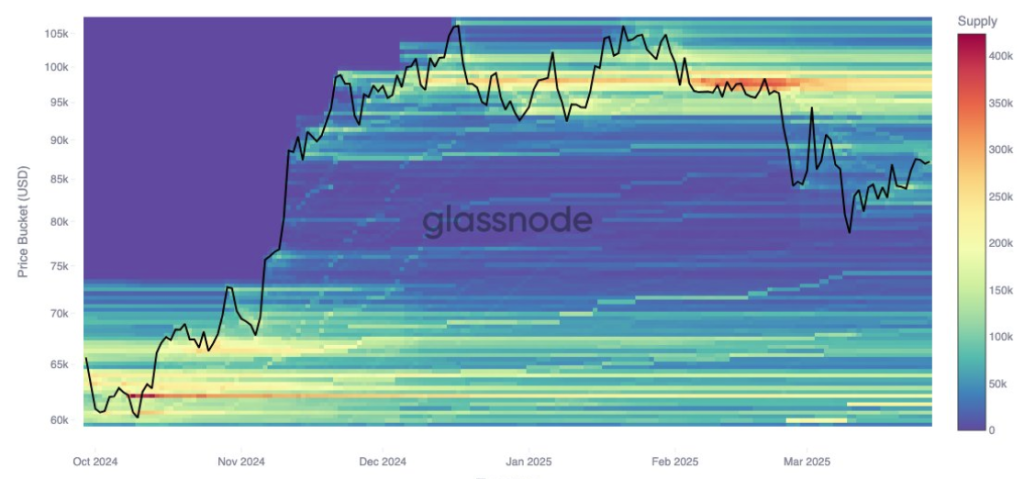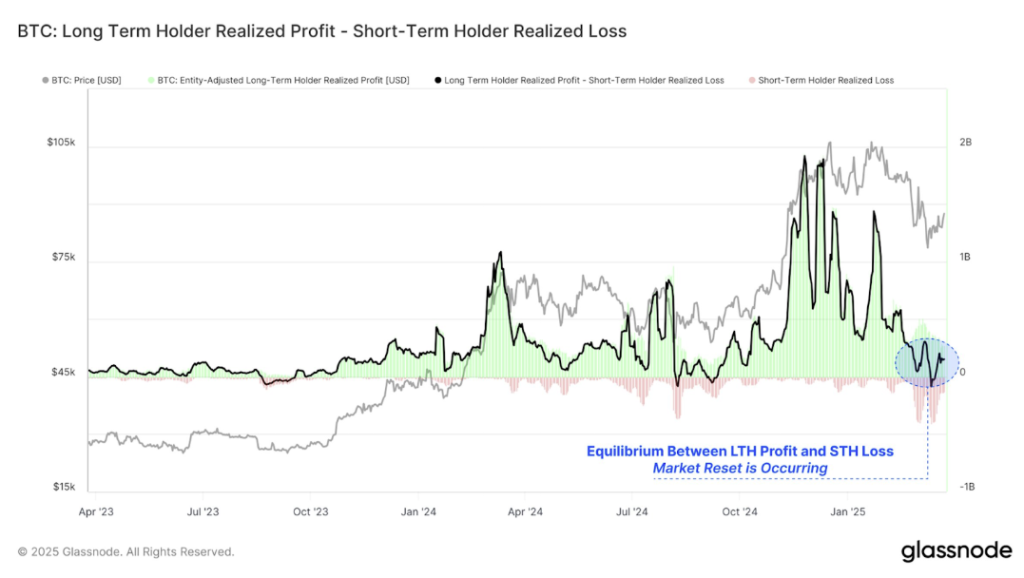Bitcoin
How Strategy is Redefining Corporate Leverage?
Published
5 days agoon
By
admin

Is Strategy quietly reshaping how public companies interact with capital markets — and could its $21 billion plan set a precedent for Bitcoin-aligned balance sheet plays?
Small fish, big splash
Strategy’s (previously MicroStrategy) role in U.S. capital markets is changing in ways that few would have predicted a few years ago. Known primarily as an enterprise software firm, the company became one of the biggest Bitcoin (BTC) proxies and most active participants in equity financing in 2024—despite accounting for just a small share of total market value.
As of Mar. 25, Strategy has a market capitalization of $87.64 billion, ranking it 109th among U.S. companies and 211th globally. On paper, that places it well below the largest public firms. Yet in terms of equity raised or announced in 2024, it stands out sharply.
According to Bloomberg Intelligence data shared by Matthew Sigel, Head of Digital Assets Research at VanEck, Strategy represents only 0.07% of the U.S. equity market by value, but accounts for 16% of all equity raised or announced in 2024.
Tiny market cap. Huge footprint.$MSTR = 0.07% of U.S. equities by value.
But 16% of all equity raised or announced in 2024Bitcoin isn’t just a store of value. It’s a magnet for capital. pic.twitter.com/7A4y927N0b
— matthew sigel, recovering CFA (@matthew_sigel) March 24, 2025
A large portion of this came from two offerings. One was a $2 billion convertible note issuance completed in November 2024. The second, announced in October 2024, is a broader funding plan that aims to raise $21 billion over three years.
As of the end of Dec., $561 million had already been secured, much of it directed toward Bitcoin purchases — a strategy the company has increasingly aligned itself with over the past few years.
Within the software sector, these two transactions made up more than 70% of the $39.5 billion in fresh equity raised in 2024. That figure puts software ahead of every other sector in 2024 in terms of additional offerings, followed by biotechnology at $30.1 billion, oil & gas at $26.46 billion, REITs at $22.44 billion, and aerospace and defense at $21.13 billion.
Notably, only biotechnology and REITs have consistently ranked among the top five sectors in recent years. Strategy’s outsized presence in software makes its contribution unusually concentrated.
Few companies of Strategy’s size have moved this aggressively to tap equity markets in 2024. Fewer still have done so with such a narrow and defined purpose — accumulating Bitcoin through corporate balance sheet expansion.
In that sense, the company’s financial activity is less about conventional software growth and more about asset allocation at scale. Let’s decode what is happening behind the scenes
Strategy doubles down on its BTC thesis
Strategy has continued its Bitcoin acquisition strategy in early 2025, adding 6,911 BTC for approximately $584.1 million at an average price of $84,529 per coin, solidifying its position as the largest public company by BTC holdings.
As of Mar. 25, the company holds a total of 506,137 BTC, acquired for approximately $33.7 billion, with an average cost basis of $66,608. At Bitcoin’s current market price of around $87,000, Strategy’s holdings are valued at over $44 billion, reflecting an unrealized gain of about $10.3 billion, or roughly $20,392 per BTC.
Year-to-date, the company has recorded a 7.7% BTC yield. This latest acquisition came shortly after Strategy reaffirmed its plans to raise capital via Class A strike preferred stock.
While the filing specifies that funds may be used for “general corporate purposes,” prior behavior suggests a large portion will likely be allocated to crypto asset accumulation.
Strategy’s approach diverges sharply from other corporate Bitcoin holders. For example, Tesla holds about 11,500 BTC, while Block (formerly Square) holds a little more than 8,000 BTC. Both firms made their purchases years ago and have largely held static positions.
In contrast, Strategy’s has conducted multiple acquisitions nearly every quarter since 2020 and remains the only publicly traded company with a defined strategy of accumulating Bitcoin as a primary treasury reserve asset.
$MSTR stock continues to mirror Bitcoin price trends. On Mar. 24, amid a strong rebound in U.S. equities — where the Nasdaq rose 2.27% — Strategy shares jumped over 10%, closing at $335.72, translating into a single-day market cap increase of roughly $8 billion, even though no major business update or earnings event occurred.
The correlation here is not incidental. Historically, MSTR has exhibited a beta of over 2.0 relative to Bitcoin, meaning it tends to amplify BTC’s price movements in both directions.
However, this strategy is not without risk. The company carries over $4 billion in long-term debt, much of it tied to convertible notes that mature between 2028 and 2032.
In the event of prolonged Bitcoin drawdowns or tightening capital markets, Strategy may face constraints on its ability to refinance or raise fresh capital.
As of its latest filings, the firm holds minimal cash reserves relative to its debt exposure, highlighting its reliance on BTC price appreciation to maintain balance sheet strength.
STRK and financial engineering
Earlier this year, Strategy introduced a new kind of financial instrument called STRK, which is short for its Series A Perpetual Strike Preferred Stock.
STRK is not a regular stock like MSTR, nor is it a traditional bond. Instead, it sits somewhere in between—designed to raise money without putting immediate pressure on existing shareholders.
STRK was launched in Jan. 2025 as part of Strategy’s larger goal to raise $42 billion over three years—to support its ongoing Bitcoin strategy. The company initially offered 7.3 million STRK shares at $80 each, raising about $563 million, more than double what it had aimed for.
So what exactly does STRK offer investors? For starters, it pays an 8% annual dividend, which Strategy can choose to pay in cash or stock. That steady income has made STRK attractive to investors looking for a more stable way to gain some Bitcoin exposure, without the sharp price swings of common stocks like MSTR or Bitcoin itself.
There’s also a conversion feature built in: if MSTR’s stock price ever reaches $1,000, each STRK share can be converted into 0.1 shares of MSTR. But with MSTR trading at around $335 as of Mar. 25, that conversion isn’t in play right now.
Since it started trading in early Feb., STRK has held up relatively well. The current market price of around $86.6 means investors are earning close to a 7% effective yield, which is high by most standards.
Compared to regular shares, STRK gives Strategy some key advantages. It helps raise capital without immediately issuing more MSTR stock, avoiding direct dilution of existing shareholders. It also attracts a different kind of investor—someone who wants income and stability, rather than just betting on Bitcoin’s long-term growth.
MicroStrategy’s unorthodox capital strategy now includes preferred equity: $STRK. It’s a bold play for the holy grail: to harness $MSTR volatility w/o dilution. Whether it succeeds depends on time horizon.
Here’s my theory—and why I’m bullish on STRK (hint: it’s less about BTC): pic.twitter.com/QxMibvKAtA
— Jeff Park (@dgt10011) January 28, 2025
Still, STRK isn’t risk-free. Its value is tied to Strategy’s overall performance, which is closely linked to Bitcoin. If Bitcoin prices drop or the company faces pressure to meet dividend obligations, STRK could lose some of its appeal.
What this means for public markets
Strategy’s positioning in 2024 offers a clear case study in how capital markets are adapting to the presence of digital assets — not through the creation of new asset classes, but by stretching existing ones.
The company has emerged as a leading source of equity issuance this year, while maintaining a market value of just 0.07% of total U.S. equities, highlighting an evolving investor appetite for exposure to asset strategies delivered through listed entities.
In doing so, Strategy has set a tone for how public companies might be used as intermediaries between traditional capital and decentralized assets. It also reflects the maturing interface between regulated financial instruments and crypto-native strategies.
What happens next depends less on Strategy itself and more on broader conditions: the cost of capital, Bitcoin’s role in institutional portfolios, and how regulators and investors treat these hybrid models.
If funding remains accessible and crypto retains demand as an alternative store of value, similar structures may emerge. If not, the model could remain singular.
In either case, Strategy has pushed public markets into new territory, where capital allocation, balance sheet strategy, and digital asset exposure now operate on the same axis.
Source link
You may like


Dogecoin (DOGE) Bulls In Trouble—Can They Prevent a Drop Below $0.15?


California introduces ’Bitcoin rights’ in amended digital assets bill


MELANIA Insider Hayden Davis Selling Millions of Dollars Worth of Memecoin Amid 95% Drop: On-Chain Data


Toulouse starts to accept crypto for public transport


Bitcoin, Crypto Prices Slide as Trade Tensions, Inflation Risks Rattle Markets


Will BlackRock Investors Stay Bullish?

Bitcoin price is at a pivotal level as ETF flows offloaded $93 million on Friday, ending a 10-day buying spree. While BTC holds key support at $82,000, BlackRock investors disposition may signal optimism.
Bitcoin ETFs End 10-day Buying Spree, But BlackRock Investors Hold
Bitcoin ETFs drew media attention on Friday as net outflows reached $93 million, marking the end of a 10-day buying spree that added over $1.07 billion in BTC.
FairSide data reveals that all of the outflows came from Fidelity’s FBTC, while BlackRock’s IBIT and eight other U.S.-approved spot ETFs recorded neutral flows, signaling diverging institutional investor sentiment.


Despite the selling pressure, BTC price showed resilience, bouncing from a 10-day low of $82,000 to reclaim the $84,000 level over the weekend.
This suggests that while some institutional players have turned cautious, BTC continues to find buyers at the $82,000 mark, likely driven by macroeconomic hedging.
Why Are Bitcoin ETFs Taking a Neutral Outlook Despite Bearish Market Sentiment?
While Bitcoin’s brief dip below $82,000 coincided with renewed regulatory uncertainty—following U.S. Congress’ scrutiny of Paul Atkins, Trump’s crypto-friendly SEC pick—the decision by major ETFs like BlackRock’s IBIT to hold rather than sell suggests a more calculated approach among institutional investors.
One possible explanation is that institutional investors are weighing broader macroeconomic risks. With concerns mounting over Trump’s proposed trade policies and their potential impact on traditional stock markets, Bitcoin remains an attractive hedge due to its independence from traditional financial structures. This could explain why ETF outflows have been concentrated in specific funds like FBTC rather than across the board.
- Large Un-realized Profits
Prior to the $93 million sell-off observed on Friday, Bitcoin ETFs had acquired over $1.07 billion in the previous 10-days. This sheer volume of Bitcoin accumulated by ETFs in recent weeks means that short-term supply is limited.
It also hints that majority on investors who began buying when BTC prices plunged below $77,000 over the past week are still in profit, hence the reluctance to sell.


This key dynamics may have contributed to Bitcoin price holding key support levels above $82,000. Notably, while BTC price rebounded, leading altcoins like Ethereum (ETH), Solana (SOL), and Ripple (XRP) have lagged behind, further reinforcing the narrative that institutional capital remains primarily focused on BTC.
What’s Next for Bitcoin ETFs and Institutional Demand?
The coming weeks will be crucial in determining whether Bitcoin ETFs resume their accumulation trend or if further outflows signal a shift in sentiment. Investors will closely watch developments in U.S. regulatory policy and broader market conditions to assess whether Bitcoin’s status as a safe-haven asset remains intact.
If the macroeconomic environment continues to favor Bitcoin as a non-correlated asset, ETF inflows could resume, pushing BTC to new highs. However, prolonged uncertainty or negative regulatory developments could trigger deeper corrections.
For now, BlackRock and other major institutional players appear to be maintaining their positions, indicating confidence in Bitcoin’s long-term trajectory.
Bitcoin Price Forecast: BTC Faces Critical Resistance at $84,400 Amid Bearish Pennant Formation
Bitcoin price forecast signals remains uncertain as BTC trades at $82,363, hovering near key support levels. The Bollinger Bands show tightening volatility, with resistance at $84,412 and $88,215. The Parabolic SAR at $80,237 suggests a continuation of the downtrend unless BTC breaks above the mid-range resistance.


A bearish pennant formation signals potential downside risk. If BTC fails to reclaim $84,400, selling pressure could drive the price towards $80,600 or even the lower Bollinger Band at $80,237. The volume delta reveals declining buying momentum, supporting the bearish case.
However, a bullish scenario emerges if BTC can hold above $82,000 and break past $84,400 with strong volume. This could lead to a rally toward $88,215, negating the bearish pennant. With key resistance intact, Bitcoin’s trajectory depends on its next move at this crucial level.
Frequently Asked Questions (FAQs)
Bitcoin price is declining due to ETF outflows, regulatory uncertainty, and shifting investor sentiment favoring safer assets like gold and cash.
Yes, if institutional demand returns, macroeconomic conditions improve, and key support levels hold, Bitcoin could regain bullish momentum.
Bitcoin ETFs drive large-scale buying and selling, influencing price volatility and overall market liquidity depending on institutional investor behavior.
ibrahim
Crypto analyst covering derivatives markets, macro trends, technical analysis, and DeFi. His works feature in-depth market insights, price forecasts, and institutional-grade research on digital assets.
Disclaimer: The presented content may include the personal opinion of the author and is subject to market condition. Do your market research before investing in cryptocurrencies. The author or the publication does not hold any responsibility for your personal financial loss.
Source link
Bitcoin
Bitcoin Could Appear on 25% of S&P 500 Balance Sheets by 2030, Analyst Says
Published
7 hours agoon
March 30, 2025By
admin

Bitcoin is making its way from trading desks to corporate treasuries, and by the end of the decade, it could be standard practice, according to one analyst.
“Across all the different strategies and implementations, I anticipate that by 2030, a quarter of the S&P 500 will have BTC somewhere on their balance sheets as a long-term asset,” Elliot Chun, a partner at Architect Partners, wrote in a market snapshot.
The strategy—holding bitcoin as a treasury reserve asset—was unorthodox when Strategy, formerly known as MicroStrategy, first adopted it in August 2020. The firm framed BTC as a hedge against inflation, a diversification tool, and a way to distinguish itself in the market.
Then CEO Michael Saylor’s highly public embrace of bitcoin transformed the company into a de facto proxy for BTC exposure. Since then, MicroStrategy stock has surged more than 2,000%, far outpacing both the S&P 500 and bitcoin over the same period, Chun pointed out.
GameStop is the latest company to follow suit, announcing this week that it would raise $1.3 billion through a convertible note to acquire bitcoin. Its stock initially surged following the announcement but has since endured a correction, falling nearly 15% for the week.
Chun argued that treasurers may soon face career risk not for buying bitcoin, but for ignoring it altogether. “Doing nothing is no longer a defensible strategy,” he wrote.
According to BitcoinTreasuries data, publicly listed companies currently hold 665,618 BTC, around 3.17% of the cryptocurrency’s total supply. Strategy holds the lion’s share, 506,137 BTC.
Read more: U.S. Listed Firms Continue Bitcoin (BTC) Treasury Adoption
Source link
Bitcoin
Bitcoin Support Thins Below $78,000 As Cost Basis Clusters Shift Toward $95,000
Published
9 hours agoon
March 30, 2025By
admin
Reason to trust

Strict editorial policy that focuses on accuracy, relevance, and impartiality
Created by industry experts and meticulously reviewed
The highest standards in reporting and publishing
Strict editorial policy that focuses on accuracy, relevance, and impartiality
Morbi pretium leo et nisl aliquam mollis. Quisque arcu lorem, ultricies quis pellentesque nec, ullamcorper eu odio.
Bitcoin’s price action in the past 48 hours has seen it approaching the $80,000 price level again, with risks of breaking to the downside. Looking at on-chain data shows a notable support level between $80,920 and $78,000 that must not be broken.
Related Reading
Particularly, on-chain analytics from Glassnode point to a thinning of support at the $78,000 level, where only minimal cost basis clusters now exist. The insight follows a sharp move that saw savvy traders scoop up nearly 15,000 Bitcoin at the March 10 low before cashing out at the $87,000 local top.
Support Cushion Rises With Clusters Between $80,000 And $84,000
Bitcoin started the month of March with a crazy crash that saw its price hit below $77,000 on March 10 and March 11. Most of the month was spent by Bitcoin embarking on a recovery from this level, eventually reaching as high as $88,500 last week.
Interestingly, on-chain data from Glassnode shows that some Bitcoin traders took advantage of the crash and bought about 15,000 BTC at this low. However, many addresses from this same cohort sold at the $87,000 local top, leaving behind a depleted buffer zone that may no longer offer the same price stability.
Bitcoin’s strongest cost basis clusters have steadily migrated upward from $78,000 throughout the month, with the most prominent support levels now sitting between $80,920 and $84,100. Approximately 20,000 BTC were acquired at $80,920, 50,000 BTC at $82,090, and another 40,000 BTC at around $84,100. These fresh accumulations are now the new zones of confidence among recent buyers that may offer cushions for the recent market dip.
At the time of writing, Bitcoin is trading at $83,120, meaning that it has lost the zone of 40,000 BTC around $84,100. This puts the onus on $82,090 and, subsequently, the $80,920 price levels. However, if the correction sharpens further, it wouldn’t be until after $78,000 that structural support reappears at $74,000 and $71,000, where long-term conviction buying occurred, estimated at 49,000 BTC and 41,000 BTC, respectively.

Image From X: Glassnode
$95,000 Cost Basis Cluster Grows With Cooling Demand
As support continues to climb gradually, resistance appears to be firming near the $95,000 mark. Investor cost basis data shows an increase of 12,000 BTC clustered at this level since March 24.
This implies that some investors now anticipate a top forming around $95,000, and selling activity could become more pronounced if prices approach that zone. This resistance, alongside the support levels, could see Bitcoin confined within a narrowing range in the short term.
Related Reading
Glassnode data confirms that long-term holders (addresses holding Bitcoin for more than 150 days) have been the primary source of profit-taking for a while. Long-term holders’ profit-taking is now nearly matched by the losses endured by short-term traders who have been holding Bitcoin for less than 155 days.

Image From X: Glassnode
Featured image from Tech Research Online, chart from TradingView
Source link

Dogecoin (DOGE) Bulls In Trouble—Can They Prevent a Drop Below $0.15?

California introduces ’Bitcoin rights’ in amended digital assets bill

MELANIA Insider Hayden Davis Selling Millions of Dollars Worth of Memecoin Amid 95% Drop: On-Chain Data

Toulouse starts to accept crypto for public transport

Bitcoin, Crypto Prices Slide as Trade Tensions, Inflation Risks Rattle Markets

Will BlackRock Investors Stay Bullish?

Bitcoin Could Appear on 25% of S&P 500 Balance Sheets by 2030, Analyst Says

Centralization and the dark side of asset tokenization — MEXC exec

Bitcoin Support Thins Below $78,000 As Cost Basis Clusters Shift Toward $95,000

Cryptocurrencies to watch this week: Solana, Cronos, DOT

EU Regulator Pushes for New Capital Rules for European Insurers Holding Crypto Assets

Japan Set To Classify Cryptocurrencies As Financial Products, Here’s All

This Week in Crypto Games: ‘Off the Grid’ Token, GameStop Goes Bitcoin, SEC Clears Immutable

Binance debuts centralized exchange to decentralized exchange trades

Why Is the Crypto Market Down Today? Bitcoin Drops to $82K as Traders Flee Risk Assets Amid Macro Worries

Arthur Hayes, Murad’s Prediction For Meme Coins, AI & DeFi Coins For 2025

Expert Sees Bitcoin Dipping To $50K While Bullish Signs Persist

Aptos Leverages Chainlink To Enhance Scalability and Data Access

Bitcoin Could Rally to $80,000 on the Eve of US Elections

Sonic Now ‘Golden Standard’ of Layer-2s After Scaling Transactions to 16,000+ per Second, Says Andre Cronje

Institutional Investors Go All In on Crypto as 57% Plan to Boost Allocations as Bull Run Heats Up, Sygnum Survey Reveals

Crypto’s Big Trump Gamble Is Risky

Ripple-SEC Case Ends, But These 3 Rivals Could Jump 500x

Has The Bitcoin Price Already Peaked?

A16z-backed Espresso announces mainnet launch of core product

Xmas Altcoin Rally Insights by BNM Agent I

Blockchain groups challenge new broker reporting rule

The Future of Bitcoin: Scaling, Institutional Adoption, and Strategic Reserves with Rich Rines

Trump’s Coin Is About As Revolutionary As OneCoin

Is $200,000 a Realistic Bitcoin Price Target for This Cycle?
Trending

 24/7 Cryptocurrency News5 months ago
24/7 Cryptocurrency News5 months agoArthur Hayes, Murad’s Prediction For Meme Coins, AI & DeFi Coins For 2025

 Bitcoin2 months ago
Bitcoin2 months agoExpert Sees Bitcoin Dipping To $50K While Bullish Signs Persist

 24/7 Cryptocurrency News3 months ago
24/7 Cryptocurrency News3 months agoAptos Leverages Chainlink To Enhance Scalability and Data Access

 Bitcoin5 months ago
Bitcoin5 months agoBitcoin Could Rally to $80,000 on the Eve of US Elections

 Altcoins2 months ago
Altcoins2 months agoSonic Now ‘Golden Standard’ of Layer-2s After Scaling Transactions to 16,000+ per Second, Says Andre Cronje

 Bitcoin5 months ago
Bitcoin5 months agoInstitutional Investors Go All In on Crypto as 57% Plan to Boost Allocations as Bull Run Heats Up, Sygnum Survey Reveals

 Opinion5 months ago
Opinion5 months agoCrypto’s Big Trump Gamble Is Risky

 Price analysis5 months ago
Price analysis5 months agoRipple-SEC Case Ends, But These 3 Rivals Could Jump 500x



✓ Share: